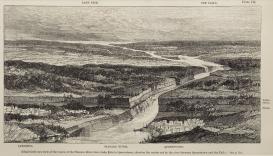In the late eighteenth century, large-scale Earth systems such as the atmosphere and the earth’s crust became objects of systematic scientific inquiry. From early on, scientists also raised the question of whether human activities disturb such systems causing unintended effects. This geoanthropological project studies the history of public debates and systematic research about large-scale Earth systems and the biogeochemical effects of anthropogenetic interventions into such systems, covering the period from the late eighteenth century until today.
In the late eighteenth century, the sciences of forestry and of agriculture studied the “overexploitation” (actors’ term) of forests and soil and its unintended chain of consequences: desiccation of soil, soil erosion, and silting of rivers; disappearance of springs, reduction of the air’s humidity, local climate change. Forestry was also an important context of early explorations of the relationship between vegetation (later: biosphere) and climate change. In agricultural science, research on cycles of materials between atmosphere, soil, and plants was undertaken, and studies of limits of fertilization became a bedrock for the understanding of the soil as an Earth sub-system.
I hypothesize that before the middle of the twentieth century, the technological sciences—studied in my previous project—provided the main institutional context for systematic studies of anthropogenetic transformations of Earth systems and their interaction. Another important context of reflections on human-led biogeochemical changes was colonialization along with scientific reports about colonies, which contributed to the field of geography and climatology. By the mid-twentieth century, the first integrated theories about human-Earth interactions were published, which marks the end of the first part of my project.

